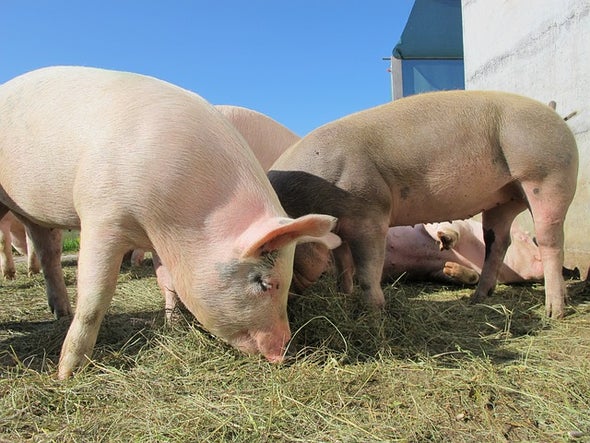Researchers modify more than 60 genes to enable organ transplants into humans.

For decades, scientists and doctors have dreamed of creating a steady supply of human organs for transplantation by growing them in pigs. But concerns about rejection by the human immune system and infection by viruses embedded in the pig genome have stymied research. Bymodifying more than 60 genes from pig embryos—ten times more than have been edited in any other animal—researchers believe they may have produced a suitable non-human organ donor.
The work was presented on October 5 at a meeting of the National Academy of Sciences (NAS) on human gene editing. Geneticist George Church of Harvard Medical School in Boston, Massachusetts, announced that he and colleagues had used CRISPR gene-editing technology to inactivate 62 porcine endogenous retroviruses (PERVs) in pig embryos. These viruses are embedded in all pigs’ genomes and cannot be treated or neutralized. It is feared that they could cause disease in human transplant recipients.
Church’s group also modified more than 20 genes in a separate set of embryos, including genes encoding proteins that sit on the surface of pig cells and are known to trigger the human immune system or cause blood clotting. He declined to reveal the exact genes, however, as the work is unpublished. Eventually, pigs intended for organ transplants will have both these modifications and the PERV deletions
“This is something I’ve been wanting to do for almost a decade,” Church says. A biotech company that he co-founded to produce pigs for organ transplantation, eGenesis in Boston, is now trying to make the process as inexpensive as possible.
Church released few details about how his team managed to remove so many pig genes. But he says that both sets of edited pig embryos are almost ready to implant into mother pigs. eGenesis has procured a facility at Harvard Medical Schoolwhere the pigs will be implanted and raised in isolation from pathogens.
Jennifer Doudna, a biochemist at University of California, Berkeley, who was one of the inventors of CRISPR technology, is impressed by the number of edited genes. If the work holds up, she says, it could be useful for synthetic biology applications where genes can be switched on and off. In microorganisms, creating these circuits requires the insertion or modification of multiple genes that regulate one another.
Cutting multiple genes will also be useful for human therapies , says George Daley, a stem-cell biologist at Harvard Medical School, as many diseases with a genetic component involve more than one gene.